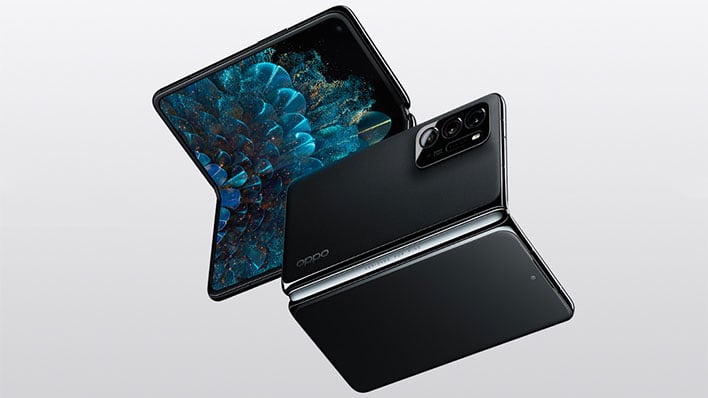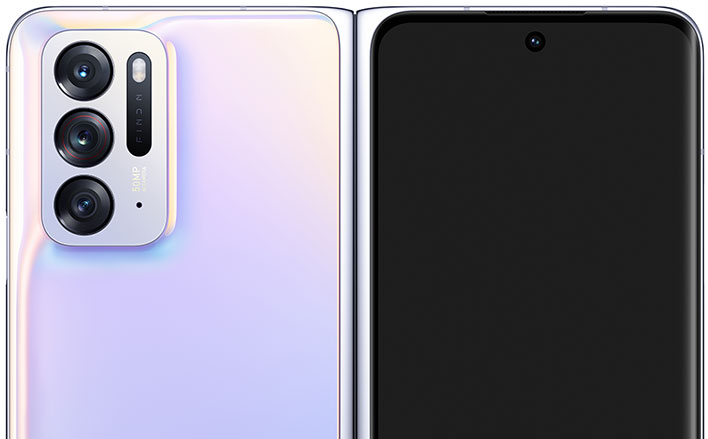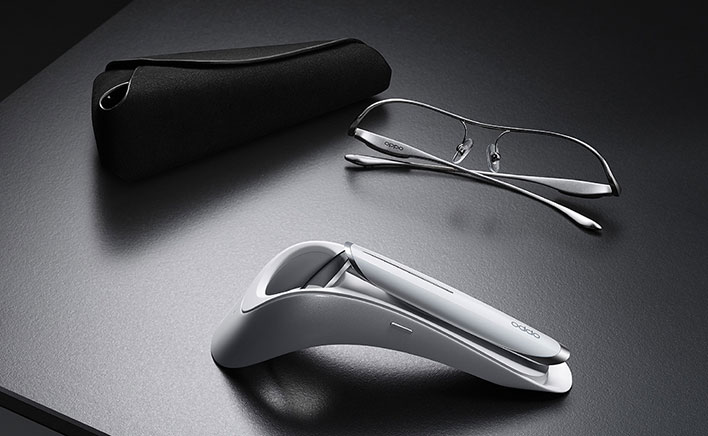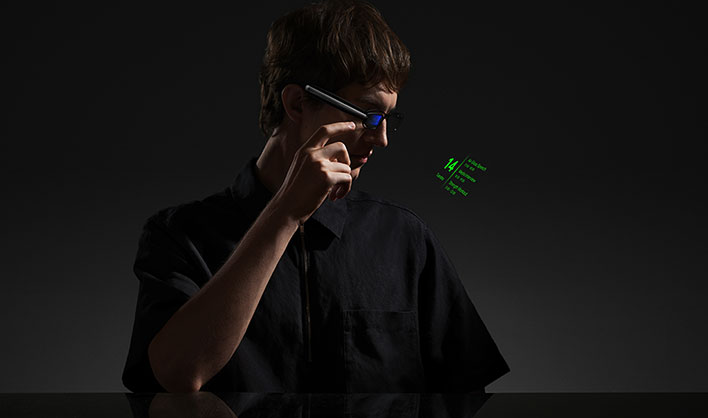Impressive Oppo Find N Folding Phone Unveiled Along With Imaging NPU To Up Next-Gen AI Photography
Oppo may not be a name you are super familiar with, but that could very well change in short order. Led by chief product offer Pete Lau, the co-founder of OnePlus, Oppo came out swinging during its Inno Day 2021 event with some impressive products, including a swank smartphone, its first NPU for high-end computational-assisted photographer, a AR glasses.
Let's start with the smartphone. From the renders and pictures shared, Oppo's flagship Find N 5G is a gorgeous foldable and one that aims to relieve several pain points associated with the form factor. Like that unwanted crease that, on some devices, is noticeably present right down the middle of the display. We'd have to see a Find N 5G in person to know for sure if the crease is completely hidden, but in photos that certainly appears to be the case.
The Find N 5G is Oppo's first-ever folding phone and the result of four years of research and development, and six generations of prototypes, the company says.
"New form factors are ushering in an exciting new time in smartphone technology. Oppo has invested a significant amount of time and effort into coming up with a better approach to a foldable smartphone, experimenting with a range of form factors, hinge designs, display materials and aspect ratios, to create a new device that meets the needs of more users," Oppo explains. "With the Oppo Find N, we aim to change people’s perceptions about what a smartphone can offer and begin making foldable devices more accessible to an even larger audience."
One of the ways Oppo chased was by designing the Fold N 5G's display to use a landscape ratio for the inner display, a first for the folding smartphone category. It features a 7.1-inch inner AMOLED display with a 1729x1920 resolution, 120Hz refresh rate, and 1,000 nits peak brightness.
"With an 8.4:9 aspect ratio, the inner display unfolds directly into landscape mode so users can watch videos, play games or read books without the extra step of rotating the device. When folded, the 18:9 aspect ratio gives users a full, familiar smartphone experience with a display that is easy to use with one hand," Oppo says.
Then there's the 5.49-inch outer AMOLED display with a 1927x988 resolution, 60Hz refresh rate, and same peak brightness rating. A "water-drop" Flexion Hinge widens the angle of the fold to offer a buffer and a crease that Oppo claims is 80 percent less noticeable compared with other devices. Oppo also says the hinge design virtually eliminates the gap between the displays when for a more pleasant aesthetic and better protection against scratches.
Interestingly, Oppo opted for Qualcomm Snapdragon 888 processor rather than the next-gen Snapdragon 8 Gen 1. The extended development of the Find N 5G play a role in the decision. The Snapdragon 888 is still a stout mobile chip for sure, just no longer the flagship within Qualcomm's stable.
This is bolstered by either 8GB of LPDDR5 RAM and 256GB of internal UFS 3.1 storage, or 12GB of RAM paired with 512GB of storage. So it's very much a high-end Android phone.
There are two front cameras for taking selfies, one on the inner display and another on the outer panel. Both are 32-megapixel sensors (f/2.4). Then for rear camera duties, the phone is equipped with a 50-megapixel f/1.8 primary lens (Sony IMX766), a 16-megapixel f/2.2 ultra-wide (Sony IMX481), and a 13-megapixel f/2.4 telephoto camera (Samsung S5K3M5).
Oppo says the Find N 5G will be available in China on December 23, starting at 7,699 yuan (around $1,210 in US currency).
Oppo Unveils 6nm MariSilicon X NPU And Air Glass
Oppo also announced its first imaging NPU, called MariSilicon X. It's a high-tech chip built on a 6-nanometer manufacturing process, and it combines an NPU, ISP, and multi-tier memory architecture in the same package.
"With more than a decade of experience in pushing the boundaries of image technology, Oppo has been behind some of the biggest innovations in the industry when it comes to camera modules, lenses, and algorithms," said Jiang Bo, Oppo’s Senior Director, during the event. "Our new cutting-edge imaging NPU is the biggest leap we’ve taken so far, which brings more power to mobile imaging systems and will create extraordinary experience for our users."
The imaging chip is capable of processing 18 trillion operations per second (TOPS), which is enough to handle Oppo's AI algorithms. This is bolstered by a dedicated tera-bps memory subsystem to make full use of all that computational power, and up to 8.5GB/s of DDR memory bandwidth.
It's these kinds of chips that enable the photographic wizardry that today's handsets are capable of achieving. Much of the heavy lifting goes unseen by the user, but it takes some fancy computational tricks and power to generating bright and vibrant HDR photos and nighttime photography without an abundance of grain/noise ruining the shot.
How good is the MariSilicon X in practice, though? We'll find out soon—the MariSilicon X will debut in the Find X series in the first quarter of 2022.
Finally, Oppo unveiled Air Glass at Inno Day 2021. These are being pitched as "assisted Reality" (aR, not to be confused with AR, or augmented reality) glasses powered by a self-developed Spark Micro Projector, micro LEDs, and a bespoke diffraction optical wavelength display.
"Oppo has been exploring the possibilities of Extended Reality (XR) for a long time, and with Air Glass, we have finally created a smart glass product that is truly within the reach of consumers,” said Levin Liu, Oppo Vice President and Head of Oppo Research Institute. "As its futuristic design suggests, Oppo Air Glass is set to revolutionize the way we view and consume information. The easy-to-use display can present key messages we need right in front of our eyes. With Oppo Air Glass, the world will never look the same again."
Air Glass is driven by Qualcomm' Snapdragon Wear 4100 platform. It projects 2D information in front of the viewer rather than 3D objects, it offers up to 1,400 nits brightness, and works with touch, voice, hand tracking, and head tracking.
It is sort of reminiscent of Google Glass, which made a brief run in the consumer sector. Air Glass will launch in China in the first quarter of next year. There's no word on price.






